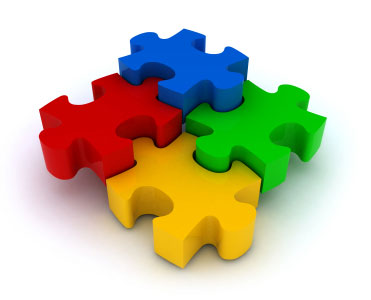
A Project to Test Operational Changes to Civil Society Organizations
A couple of years ago, a small group started a global conversation around the dramatic operational changes that will be needed to keep civil society organizations/NGOs relevant while facing a daunting set of challenges. Some of these challenges include: (1) changing demographics; (2) virtual connectivity; (3) the increase in social entrepreneurship and how a profit concept may apply to a traditionally ‘not-for-profit’ sector; and (4) changing funding patterns and international players. See more about these trends and our initial conversation in this SSIR post.
Through a series of conversations since then we have determined that we can add value by moving the conversation (that many others are also having) to action. This means testing and adapting (over a period of years) some new ways of operating. This will be done through lead organizations/networks working with a diverse, global peer community. The initial peer community (which we hope will expand over time by joining with others ‘in a similar and complementary exploratory space’) has agreed that: We want to do things differently, test and share some new ways of operating.
Drawing from some of the learning around Social Labs we are taking our time to put a framework into place that will help us sustain the project for the time needed to test and adapt new ideas.
After reviewing existing Social Lab initiatives, we’ve learned that the following are especially important:
- People – One cannot underestimate the importance of putting together a diverse team and taking the time to build bonds and trust among the team in order to generate creative approaches and sustain momentum through the testing and adaptation phases.
- Timeframes – Timeframes will be variable. Sometimes you need to move more quickly, other times allow the process to unfold in a more organic way. Find the cadence and approaches that will help your group to keep at it over the many years it may take.
- Flexibility – Continue to be adaptable, clarifying your goals and strategies while being willing to ‘pivot’ or change tactics as you continue to learn.
- Resistance to change – When traditional organizations/networks try to do things in new ways, they can face resistance from long-term members/partners. This can be helped by analyzing and understanding your own internal processes and be clear about them before reaching out to new partners.
Some of the areas we will be exploring under the umbrella of the Civil Society and Testing Change project include:
(1) Integrating youth into organizational decision-making – youth (millennials, those from teenagers to young adults, however you may define this demographic ) want to make a difference in their societies and are action and results oriented; and in significant numbers they are now bypassing existing organizations to start their own. Some of the questions we will be looking at are: How do we move from youth engagement (one dimensional and often siloed from the rest of the organization) to youth integration (a multigenerational sharing of ideas)? How might existing organizations benefit from better engaging young people in decision-making at all levels of the organization? How might it make a difference in the impact of these decisions?
(2) More effective approaches to impact measurement – much of what we evaluate currently measures outputs rather than outcomes; and we struggle to prove the causal link between what we do and the broader changes that are taking place. We would like to explore new approaches to impact measurement to help ensure that we can use our limited resources to transform societies in more effective ways.
(2) Multi-sector collaboration – the complex challenges we face call for us to break out of some of our historic sector silos and find better ways of working together. We will look at some existing long-term multi-sector collaborations that have worked in issue area silos (food sustainability, global health, etc…), try to bring some of their learning together, and build on what they have learned.
(3) New models for operating to bring about significant societal change – our historic models for nonprofits/NGOs/civil society organizations may be outmoded to address today’s challenges. What are some of the creative new hybrid structures and networks that are or can be tested?
As this is an exploratory, multi-year process, the list of topics may evolve over the life of the project.
Although it may seem that this is a wide range of different topic areas, they are all challenges that any one organization or network may need to deal with in the coming years to stay relevant. The project will link them through a process of sharing learning around how this kind of complex change can be navigated. It is a multi-year exploring and learning journey that we are excited to take!